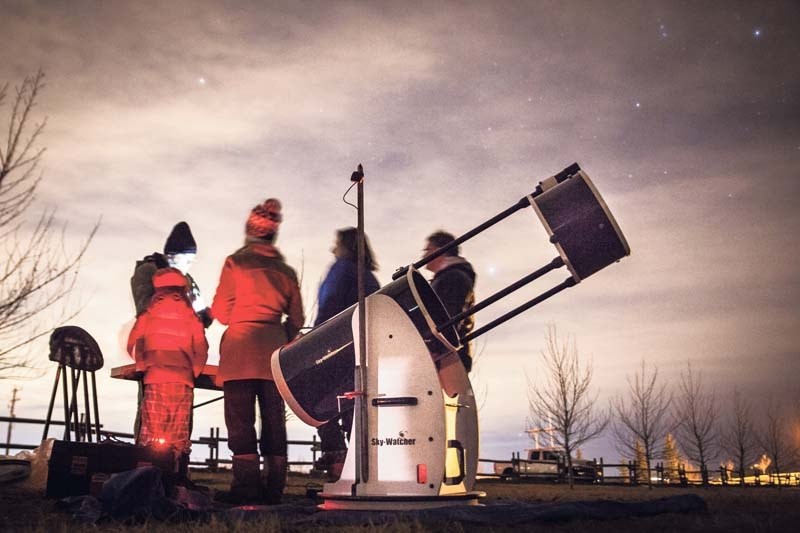Amateur astronomer Nic David says it’s the response from new stargazers he and his wife Judy love the most about helping people understand the sky, like they did at Mitford Pond last Friday night.
“It’s, ‘Wow,’” said the Cochrane cosmologist. “That expression of wonder is always very gratifying.”
Organized by the Nan Boothby Memorial Library, the inaugural stargazing event drew more than two dozen people to the dark of the park, where they sipped hot chocolate under a partly cloudy sky as David and other amateur astronomers from the area shared their celestial knowledge.
Huge refractor and reflector telescopes pointed to planets like Mars and Venus, while others were directed at the brightest star in the sky, Sirius.
“It’s a bright blue star – it’s significantly brighter than our sun,” explained David. “It’s eight and a half light years away. I always like that with kids, because you can usually find a kid that’s about eight and half years old and you tell them, ‘That’s the light that you were born by.”
Kids and adults also recognized the belt of Orion and then learned more about the Orion nebula, a massive cloud of dust, hydrogen, helium gas and plasma known as a “stellar nursery” – a place where stars are born.
Seen as the middle of Orion’s sword, it’s one of the most viewed and photographed objects in the night sky.
“Orion is very splendid because it’s got the great nebula – which is very bright. Stars are forming in this great cloud of gas and dust; some of the stars are very bright and they’re lighting up the rest of the cloud,” he said. “It is very, very impressive.”
David, who has lived in Cochrane for 33 years, said he and his wife picked up their astrography hobby about 10 years ago, after he fully retired.
Now, he, his wife and a handful of other Cochranites belong to the Royal Astronomical Society of Canada, spending evenings in different Alberta parks and at the Rothney Astrophysical Observatory near Priddis, about 25 kilometres southwest of Calgary.
The Davids have even travelled to the American southwest and Chile to achieve great vantage points for viewing constellations.
“There’s trillions of galaxies and trillions and trillions of stars. It’s really fascinating knowing where we come from,” he said. “When you talk about stargazing, it’s far more than stargazing: it’s learning about the universe and about how we came to be in the universe … and all of those sorts of questions.
“And it’s right there – it’s accessible to everybody. We should all know about everything – if we possibly could.”




